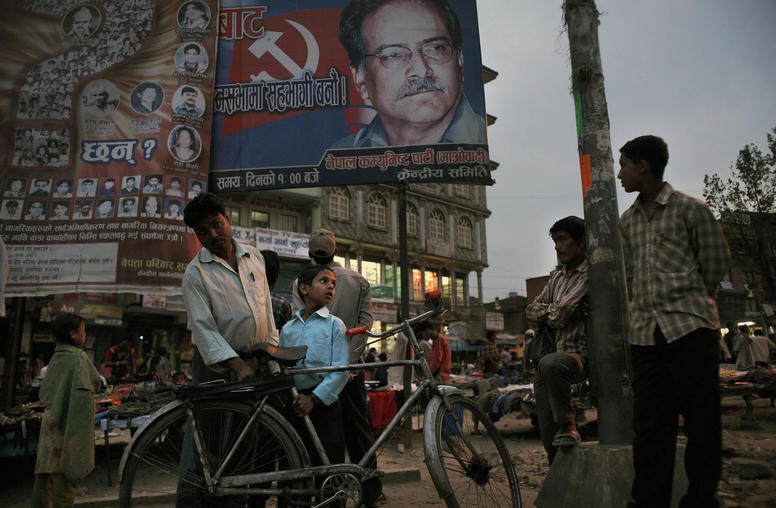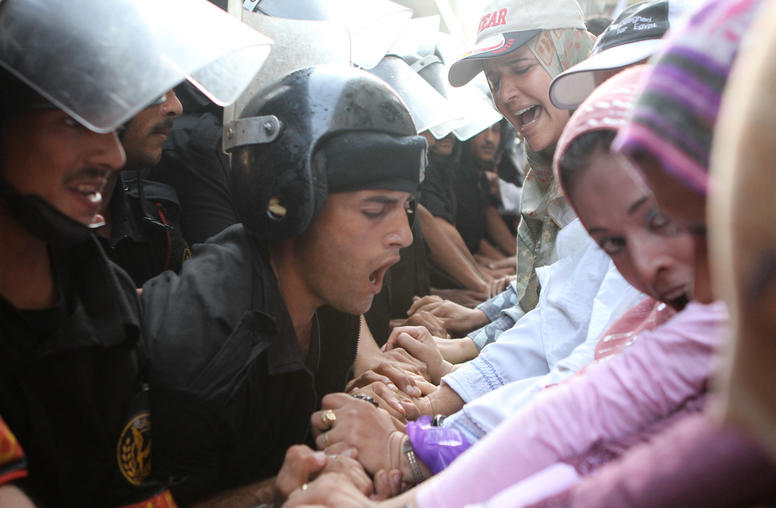Commission of Inquiry: Nepal 90
Commission of Inquiry: Commission of Inquiry to Locate the Persons Disappeared during the Panchayat Period
Duration: 1990 - 1991
Charter: Order of the Prime Minister
Commissioners: 4
Report: Public report
Commission of Inquiry: Commission of Inquiry to Locate the Persons Disappeared during the Panchayat Period
Dates of Operation: 1990 – 1991
Background: In 1960 Nepal’s King Mahendra abolished the country’s limited democratic government and declared a system of “partyless” autocratic rule. The elected Prime Minister, Members of Parliament and political opponents were arrested by the military. This so called Panchayat (“Council”) system remained in place until 1990, when popular protests forced the King to restore multiparty system with parliamentary democracy. During the Panchayat period political parties were prohibited to carry out all forms of political activities. Repression of political opposition groups continued under the rule of Mahendra’s son, King Birendra, who took power in 1971.
The first post-Panchayat Prime Minister, Krishna Prasad Bhattarai, created the Commission of Inquiry to Locate the Persons Disappeared during the Panchayat Period in 1990. The commission was dissolved almost immediately thereafter due to controversy regarding the process of appointment of commission officials that entailed the government appointing them as per the 1962 Panchayat constitution. As a result of this controversy, two commissioners, who were representatives of Nepalese human rights groups, resigned. The government appointed a second commission with the same mandate, but through an acceptable process that considered the political changes in the country.
Charter: The Commission of Inquiry to Locate the Persons Disappeared during the Panchayat Period was established by executive order of the Prime Minister as per the decision of the Council of Ministers. (The cabinet decisions are not usually made public; therefore it is not publicly available).
Mandate: The Commission of Inquiry to Locate the Persons Disappeared during the Panchayat Period was created to examine allegations of human rights violations during the autocratic Panchayat system from 1961 to 1990, to investigate and identify the final places of detention of those who had disappeared, and to identify additional victims.
Commissioners and Structure: The Commission of Inquiry to Locate the Persons Disappeared during the Panchayat Period was comprised of four commissioners: Surya Bahadur Shakya (Chair), Prakash Kafle (Member), Basudev Dhungana (Member) and Dr. Sachche Kumar Pahadi (Member).
Report: The Commission of Inquiry to Locate the Persons Disappeared during the Panchayat Period concluded its work in 1991, and officially submitted their report to the government. The report was made public in 1994 as a result of pressure from civil society groups, although it is currently only available through the parliamentary secretariat and Nepal’s national library.
Findings:
Conclusions
- The commission officially identified a total of 35 persons disappeared at the hands of the state, five of whom were killed, and the status of the remaining cases was declared “unknown”. The finding also provided the details of all eight persons arrested for allegedly detonating three bombs in Kathmandu in 1986 who subsequently disappeared.
Subsequent Developments:
Reforms
- Despite the work of the commission, mass disappearances continued in Nepal, particularly during the Maoist “people’s war” from 1996 until 2006. The United Nations listed Nepal as the country with the most disappearances in 2003 - 2004. Since the 2006 signing of the peace agreement between the Maoists and the government, the number of disappearances has dramatically decreased. However, civil society groups and victims’ groups have continued to call for a thorough and independent investigation into the disappearances during the 10-year conflict.
Special Notes: The Comprehensive Peace Agreement of 2006 calls for the creation of a truth and reconciliation commission as well as an investigative body dealing with disappearances. On June 1, 2007, the Supreme Court of Nepal ordered the Government of Nepal to establish a commission of inquiry to investigate enforced disappearances committed by the security forces and the Maoists during the conflict. In February 2009, the Government of Nepal introduced an ordinance to form the disappearance commission.
Sources:
Center for the Study of Violence and Reconciliation. "Justice in Perspective - Truth and Justice Commission, Asia & Australasia - Nepal." Available at http://www.justiceinperspective.org.za/index.php?option=com_content&task=view&id=48&Itemid=89 (accessed May 14, 2009).
Cochran-Budhathoki, Karon and Scott Worden. USIPeace Briefing: Transitional Justice in Nepal: A Look at the International Experience of Truth Commissions United States Institute of Peace, 2007. Available at http://www.usip.org/resources/transitional-justice-nepal-look-international-experience-truth-commissions (accessed June 18, 2008).
Hayner, Priscilla B. Unspeakable Truths: Facing the Challenge of Truth Commissions. New York: Routledge, 2002, 57.
International Center for Transitional Justice. "Nepal: ICTJ Activity." Available at http://ictj.org/our-work/regions-and-countries/nepal (accessed May 12, 2011).
International Center for Transitional Justice and Edbhokesi Phorama (Kathmandu, Nepal). "Nepali Voices Perceptions of Truth, Justice, Reconciliation, Reparations and the Transition in Nepal." International Center for Transitional Justice, March 2008. Available at http://ictj.org/publication/nepali-voices-perception-truth-justice-reconciliation-reparation-and-transition-nepal (accessed May 12, 2011).
Peterson, Trudy Huskamp. Final Acts: A Guide to Preserving the Records of Truth Commissions. Washington, D.C.; Baltimore: Woodrow Wilson Center Press; Johns Hopkins University Press, 2005. Available at http://www.wilsoncenter.org/book/final-acts-guide-to-preserving-the-records-truth-commissions (accessed October 26, 2008).



